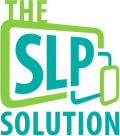Memory and Cognition Therapy Guides
Step-by-Step plans for a variety of memory/cognition skills – Plus, wording for your goals!
What is Task Analysis?
Task analysis is the process of breaking a larger skill down into smaller, sequential steps. With each step that the child masters, he grows closer to being able to perform the full skill independently. Tasks analysis is an evidence-based instructional method which has been found especially effective for children who do not respond to regular instruction, which makes it perfect for the children on our case loads.
While the process of task analysis has been studied and backed by research, there aren’t always agreed-upon ways to break down a skill. Every SLP may have a slightly different method of breaking down skills into step-by-step plans. What’s important is that the steps are achievable and sequential so that the child sees incremental success on the way to learning a new skill.
The following therapy guides represent our task analysis for each skill. You’ll also find sample text for your goals.
Looking for Therapy Activities? Worksheets? Troubleshooting? More Help?
We have more where this came from! Get access to the full SLP Solution Curriculum when you become a member!
Membership Includes…
- Therapy ideas for each step below
- No Prep Worksheets and Therapy Kits
- Troubleshooting Advice
- Access to our staff and community for asking questions
- Monthly webinars for continuing education
Our Step-By-Step Guides:
How to Use:
Click the skill that you’d like to expand. You’ll find our task analysis of the steps you can follow in therapy to teach that skill. You’ll also find sample text to include in your goal writing. To get detailed therapy activities for each step below, please join our membership program to get access to the full SLP Solution Curriculum.
- Describing a Sequence that is Already Together: When presented with pictures of steps to a sequence (in the correct order), Student will use complete sentences and organizational words like “first, next, then, and last” to describe 3-5 step sequences.
- Putting Steps to a Sequence in Order: When presented with picture steps to a common task, Student will place the pictures in the correct order to complete that sequence.
- Putting Steps in Order and Then Describing: When presented with picture steps to a common task (not in the correct order), Student will arrange the pictures in the correct order and then use complete sentences and organizational words like “first, next, then, and last” to describe 3-5 step sequences.
- Describing Sequences without Pictures: When prompted, Student will describe the steps (in order) to complete a common sequence or task (such as pouring a bowl of cereal) using complete sentences and organizational words like “first, next, then, and last”.
- Practice Word Finding at the Word Level: Student will participate in a variety of tasks that require him to think of single words or short phrases quickly. Examples: Fill in the blank associations, rapid naming from categories, providing a word when given a definition, listing items required for a task, finishing similes, providing antonyms and synonyms.
- Improve Word Finding at the Conversational Level: Student will improve language organization skills to improve ability to recall words in conversational speech.
What Do I Do in Therapy?
If you’re still not sure what to do in therapy, don’t worry! We have more resources for you! The SLP Solution Curriculum contains detailed descriptions of what you can do in therapy for each of the steps listed above. Join today to get all of the therapy ideas, worksheets, and support!

